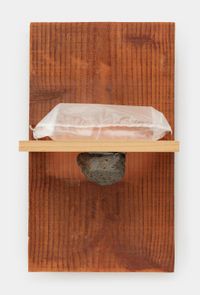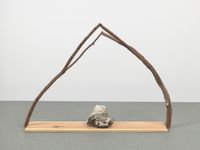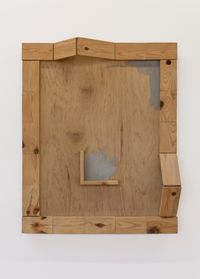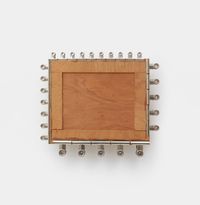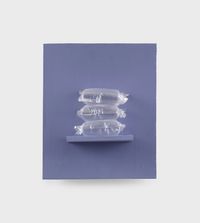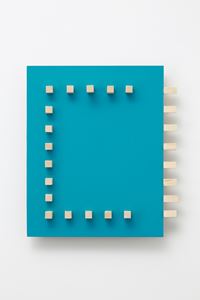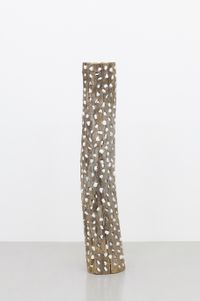Kishio Suga is a leading figure of site-specific sculpture in Japan. A member of the Mono-ha movement, Suga interrogates the encounter between natural and industrial materials, and between these materials and their site.
Read MoreSuga was born in Morioka, the capital city of Iwate Prefecture, Japan. He attended Tama Art University in Tokyo from 1964 to 1968 and studied oil painting. While studying, Suga was influenced by the work of his teachers Yoshishige Saitō and Jiro Takamatsu. Saitō in particular encouraged Suga to challenge the ideas of modernism and Eurocentric art theory.
Kishio Suga's sculptures bridge the transition from post-war avantgarde sculpture and contemporary art in Japan. Often made with raw material, his sculptures leave room to examine the nature of the material and its relationship to site.
Suga is one of the key figures of the Mono-ha movement, whose name translates to 'School of Things' in Japanese. One of the earliest works in which the artist explored the material focus of what would become Mono-ha was Layered Space (1968), a clear box containing layers of raw material: sawdust, cotton, ash, plastic dust, and soil. This focus on raw material and its properties is relevant to Suga becoming one of the leading artists in the Mono-ha movement, alongside others including Lee Ufan and Nobuo Sekine.
The Mono-ha movement was interested in 'not making'. Its members considered art or representation to be obsolete, and were interested instead in exploring the properties of pre-existing materials. Suga and other Mono-ha artists used non-conventional but readily available materials in their work, such as concrete, wood, plastic, rock, dirt, and negative space.
Suga's Law of Multitudes (1975), for example, consists of a sheet of plastic stretched over dozens of concrete columns, each topped with a large stone. The work engages both with the different material properties of the plastic and concrete but also with the space created above and below the sheet of plastic.
Kishio Suga's work is concerned with the relationship between material and site, and is thus often site-specific. In the late 1970s, Suga regularly performed 'Activations', which involved simple sequences of actions such as gathering, stacking, tossing, or folding. He performed such an activation for the work There: At Each Location in 1976, demonstrating how the meaning of a work is not only contingent on site but also on the ways that our bodies interact with the work.
Suga was awarded the 11th Shell Art Prize in 1967 and the Grand Prize at the 5th Japan Art Festival in 1970. In 2016, he was awarded the Mainichi Art Award.
Kishio Suga's first solo exhibition was Space Transformation (1968) at Tsubaki Kindai Gallery in Tokyo. Since then, his work has been shown in solo and group exhibitions around the world each year. Recent exhibitions include the solo show Kishio Suga: The Existence of "Things" and the Eternity of "Site" (2021) at the Iwate Museum of Art in his hometown of Morioka.
Suga re-created one of his most significant works, Law of Situation (1971) for the 57th Venice Biennale in 2017.
Kishio Suga's website can be found here.
Vida Quivooy | Ocula | 2021
